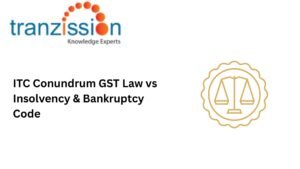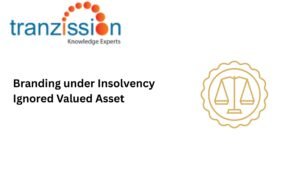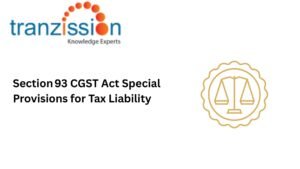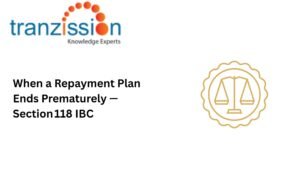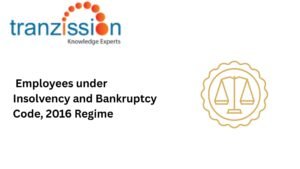
Understanding Fresh Start Process Under IBC in India
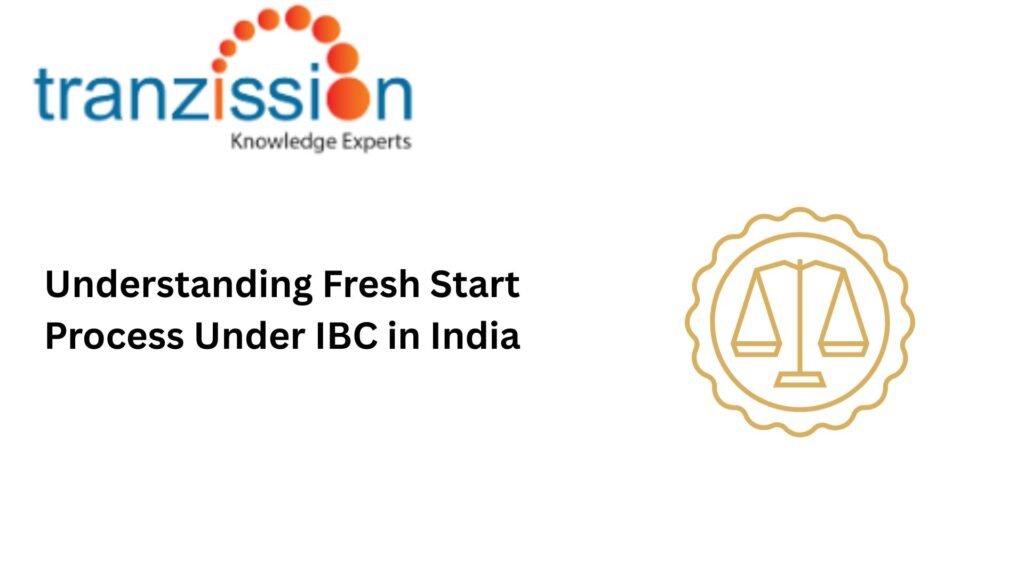
Table of Contents
TheFresh Start Process Under IBC process is given under Part III of Chapter II of the Insolvency and Bankruptcy Code, 2016 (“the IBC”) as a streamlined insolvency resolution mechanism designed to offer a financial reset for low-income individuals and small partnerships. It allows qualifying debtors to discharge certain debts and make a fresh start financially, without the burden of past obligations. The core benefit is the discharge of “qualifying debts”, meaning debtors are relieved from the obligation to repay these debts.
Who Is Eligible Fresh Start Process Under IBC ?
Section 80 who is unable to pay his debts and fulfils the conditions specified in this section, in respect of his qualifying debts to the National Company Law Tribunal (NCLT) if:
- The gross annual income of the debtor does not exceed sixty thousand rupees
- The aggregate value of the assets of the debtor does not exceed twenty thousand rupees
- The aggregate value of the qualifying debts does not exceed thirty -five thousand rupees
- He is not an undischarged bankrupt
- He does not own a dwelling unit, irrespective of whether it is encumbered or not
- A fresh start process, insolvency resolution process or bankruptcy process is not subsisting against him
- No previous fresh start order under this Chapter has been made in relation to him in the preceding twelve months of the date of the application for fresh start
How to Apply Fresh Start Process Under IBC
To apply a debtor must meet specific eligibility criteria, file an application with the NCLT, and comply with certain requirements, all which have been explained below:
- The debtor must file an application with the NCLT or the Debt Recovery Tribunal (DRT), depending on the case. This application must include a list of all qualifying debts, including amount, interest, and creditor details, details of any security held against the debts, financial information of the debtor, personal details of the debtor, reason for the application, details of any ongoing legal proceedings against the debtor, etc.
- The application must be in the prescribed from and accompanied by the required fee.
- The NCLT may appoint a resolution professional (RP) to examine the application and the debtor’s affairs. The RP will investigate the debtor’s financial affairs and can either admit or reject the application.
- If the application is admitted, a 12 month moratorium is imposed and certain actions are prohibited, such as the creditors cannot initiate or continue legal proceedings against the debtor, the debtor is not obligated to repay qualifying debts, secured creditors can still enforce their security.
- At the end of the 12 month moratorium, the RP, if any, will issue a discharge order. The qualifying debts listed in the application are discharged.
- The debtor must disclose the Fresh Start Process Under IBC process when entering into financial transactions above a notified value.
Role of the Resolution Professional
The RP is appointed to examine the debtor’s application for a fresh start process. This examination includes verifying the debtor’s eligibility, the validity of the debts, and any potential objections from creditors. The RP can also seek further information from the debtor, creditors, or other relevant parties. A key function of the RP is to compile a final list of qualifying debts eligible for discharge under the fresh start process and must evaluate any objections raised by creditors regarding debts included in the initial list. This involves assessing the validity of the objections and making decisions to accept or reject them. The RP is required to submit the final list of qualifying to the NCLT at least 7 days before the end of the moratorium period. He also acts as a central point of communication between the stakeholders, and ensures that all procedural requirements are followed, including those related to creditor objections, including those related to creditor objections and the preparation of the final debt list. The NCLT, based on the RP’s report and the final list of qualifying debts, issues a discharge order. This order discharges the debtor from the specified qualifying debts. The RP also ensures that the discharge order is forwarded to the Insolvency and Bankruptcy Board of India (IBBI) for record keeping.
Admission, Objections & Discharge
- Decision & Moratorium: After the RP submits their report, the DRT or NCLT has 14 days to decide on admitting or rejecting the application. If admitted, a moratorium is imposed, and as per the section 101, the standard of the moratorium is 180 days from the date of admission of the application. However, the moratorium can end earlier if the NCLT or DRT passes an order on the repayment plan under section 114 of the IBC.
- Creditor Objections: After the RP examines and identifies qualifying claims, creditors have 10 days to file objections with the RP. He is obligated to examine these objections and either accept or reject them within 10 days of the objection being filed.
- Final Discharge: After managing the corporate debtor’s affairs, the CIRP prepares a comprehensive list of debts that qualify for discharge. This final list must be submitted to the Tribunal at least 7 days before the end of the moratorium period. The NCLT reviews the list, and upon satisfaction, issues a discharge order. This order effectively releases the debtor from the obligation to repay the listed debts, including any interest or penalties that accrued during the insolvency process.
Moratorium Restrictions
During a fresh start process, a debtor is prohibited from certain actions to ensure a fair and transparent process for debt resolution as listed in section 85(3):
- not act as a director of any company, or directly or indirectly take part in or be concerned in the promotion, formation or management of a company
- not dispose of or alienate any of his assets
-
- be required to inform prior to entering into any financial or commercial transaction of such value as may be notified by the Central Government, either individually or jointly, that he is undergoing a Fresh Start Process Under IBC process
- disclose the name under which he enters into business transactions, if it is different from the name in the application admitted under section 84
- not travel outside India except with the permission of the Adjudicating Authority
Revocation Causes
The RP can submit an application to the NCLT seeking revocation of the order made under section 84 on the grounds:
- if due to any change in the financial circumstances of the debtor, the debtor is ineligible for a Fresh Start Process Under IBC process
- non-compliance by the debtor of the restrictions imposed under sub-section (3) of section 85
- if the debtor has acted in a mala fide manner and has wilfully failed to comply with the provisions of this Chapter
Pros & Cons
Advantages
- It provides a fast track relief that is designed to be significantly faster than traditional bankruptcy or debt settlement, often aiming to resolve debts within a year or less.
- This process is more cost-effective due to streamlined processes and lower legal fees.
- They are tailored for small businesses or individuals with relatively low debt levels, making them accessible to a wider range of debtors.
- It aims for a full discharge of debt, meaning debtors are no longer legally obligated to repay the discharged debts after the process is complete.
- Due to the above-mentioned points, the relief from the overwhelming burden of debt can significantly reduce stress, anxiety, and depression read more Insolvency Petition Procedure in India
Limitations
- The income, asset, and debt thresholds are very low, making the process inaccessible to a large portion of individuals facing financial distress.
- Unlike corporate insolvency, there is no independent regulator overseeing the fresh start process for individuals, which can lead to inconsistencies and inefficiencies.
- The process is limited to individuals and does not extend to companies or their subsidiaries.
- The low eligibility criteria and lack of proper oversight may lead to potential misuse of the process.
Policy Intent & Critiques
- Why Lawmakers Introduced It: Lawmakers introduced the Fresh Start Process Under IBC process to provide a mechanism for individuals with low incomes and assets to discharge their debts and make a clean financial start. This process aims to promote financial inclusion and give individuals a second chance, recognising that the traditional insolvency process can be too complex and costly for those with limited means.
- Areas for Reform: Many individuals lack the awareness of the Fresh Start Process Under IBC process and its benefits, which can be resolved through targeted campaigns and educational programs. The current threshold may need to be reviewed and adjusted to reflect the current economic realities and ensure that a wider range of individuals can benefit from the process. Addressing the heavy workload on DRTs and NCLTs is crucial to ensure timely resolution of cases. This may involve increasing judicial capacity or exploring alternative dispute resolution mechanism.
Practical Tips for Debtors
- Accurate and complete documentation of all financial information is essential.
- Consider engaging a lawyer or financial advisor specialising in insolvency to guide them through the process.
- Be fully transparent and honest with the RP throughout the process, because withholding information or providing inaccurate details can have serious consequences.
- Pay close attention to and strictly follow all conditions and restrictions imposed during the moratorium period.
Conclusion
The fresh start process represents the goal of the IBC to promote financial inclusivity and give a second chance to the economically and vulnerable persons by giving low-income individuals a chance to pay-off eligible debts and gain a clean financial slate. Although powerful under the IBC, it is underutilized. With greater awareness and capacity, it can meaningfully aid financial inclusion and economic stability.

